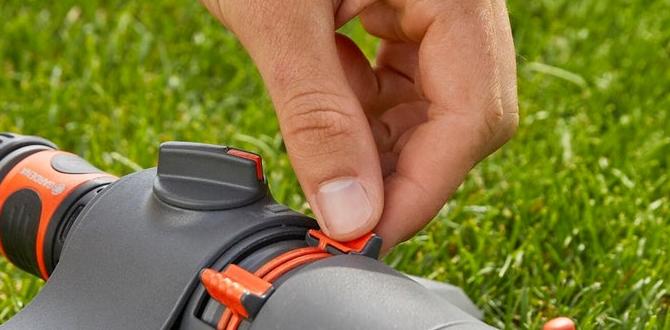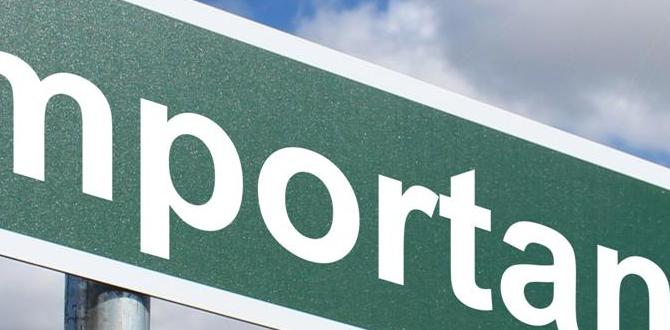As autumn approaches and the leaves begin to change, it’s time for gardeners and farmers alike to prepare for the bountiful harvest of butternut squash. This versatile and nutritious vegetable has been a staple in many dishes for centuries, and its popularity continues growing.
However, harvesting butternut squash is not as simple as plucking it off the vine. To ensure a successful harvest and the best quality squash, it’s important to have a solid understanding of when and how to pick, as well as how to properly store and use this beloved vegetable. we will explore the ins and outs of harvesting-butternut squash, from choosing the perfect time to harvest to tips for preserving and incorporating it into delicious recipes.
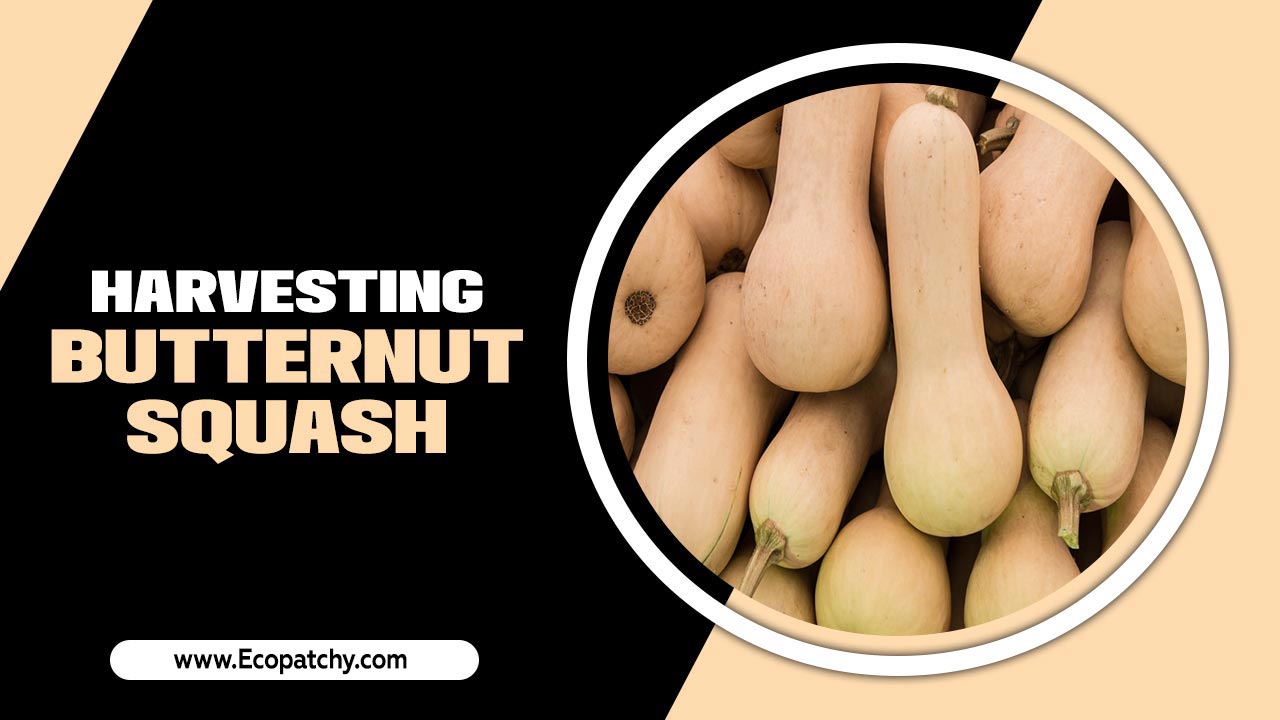
How To Identify Mature Butternut Squash
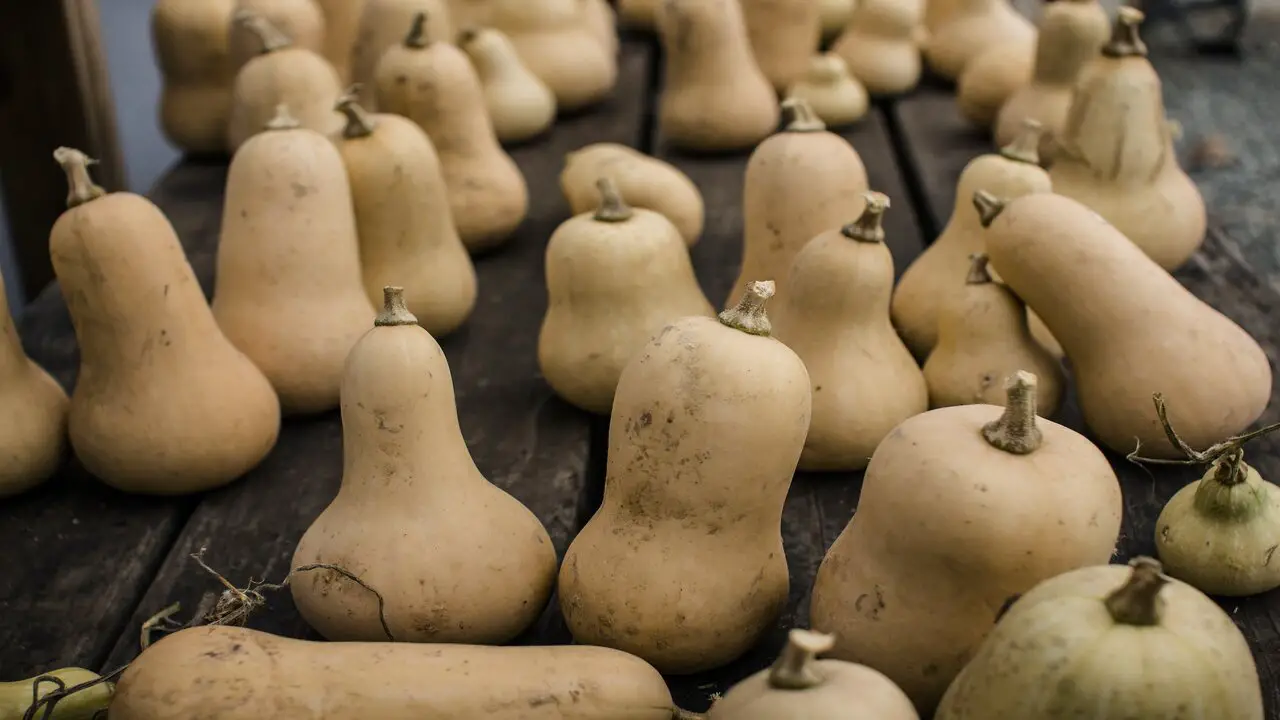
Identifying mature butternut squash is crucial for ensuring a successful harvest. Here are some key points to help you determine when your butternut squash is ready to be picked:
- Check The Color: Mature butternut squash will have a deep tan or light brown color. Avoid picking squash that is still green, as it indicates immaturity.
- Examine The Skin: The skin of mature butternut squash should be hard and firm, with no visible soft spots or blemishes.
- Assess The Stem: A fully mature butternut squash will have a dry and brittle stem. If the stem is still green and flexible, the squash needs more time to ripen.
- Tap Test: Give the squash a gentle tap with your finger. If it produces a hollow sound, it likely means it is mature and ready to be harvested.
By following these guidelines, you can ensure that you harvest your butternut squash at its peak ripeness, resulting in delicious and flavorful meals.
The Right Time To Harvest Butternut Squash And How To Store It
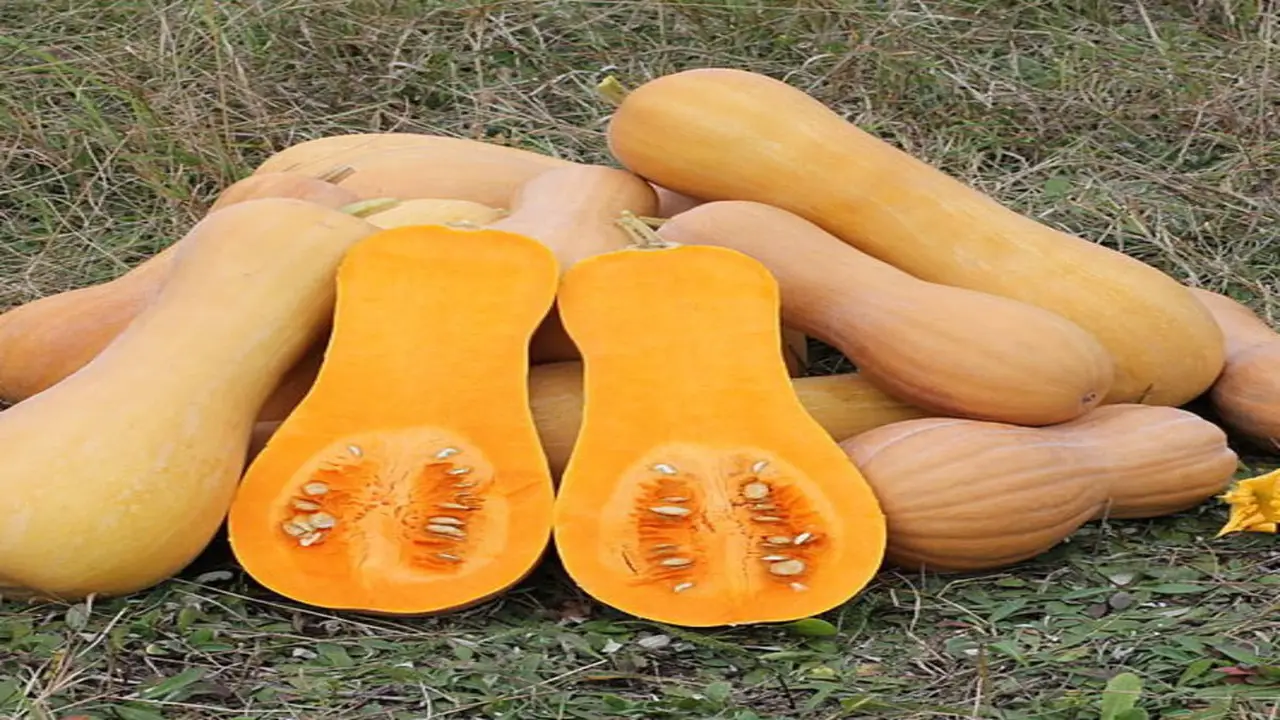
Knowing the right time to harvest butternut squash is key to ensuring that it is at its peak flavor and texture. Generally, butternut squash should be harvested when the skin has turned a deep tan or beige color and is hard to the touch.
The stem should also be dry and brown. To harvest, simply cut the squash from the vine, leaving a few inches of stem attached. It’s important to handle the squash with care to avoid any damage or bruising.
You can store harvested butternut squash in a cool, dry place for several months. It’s best to keep them in a single layer so they don’t touch each other, as this can cause rotting. With proper harvesting and storage, you can enjoy delicious butternut squash throughout the winter months.
Timing Techniques
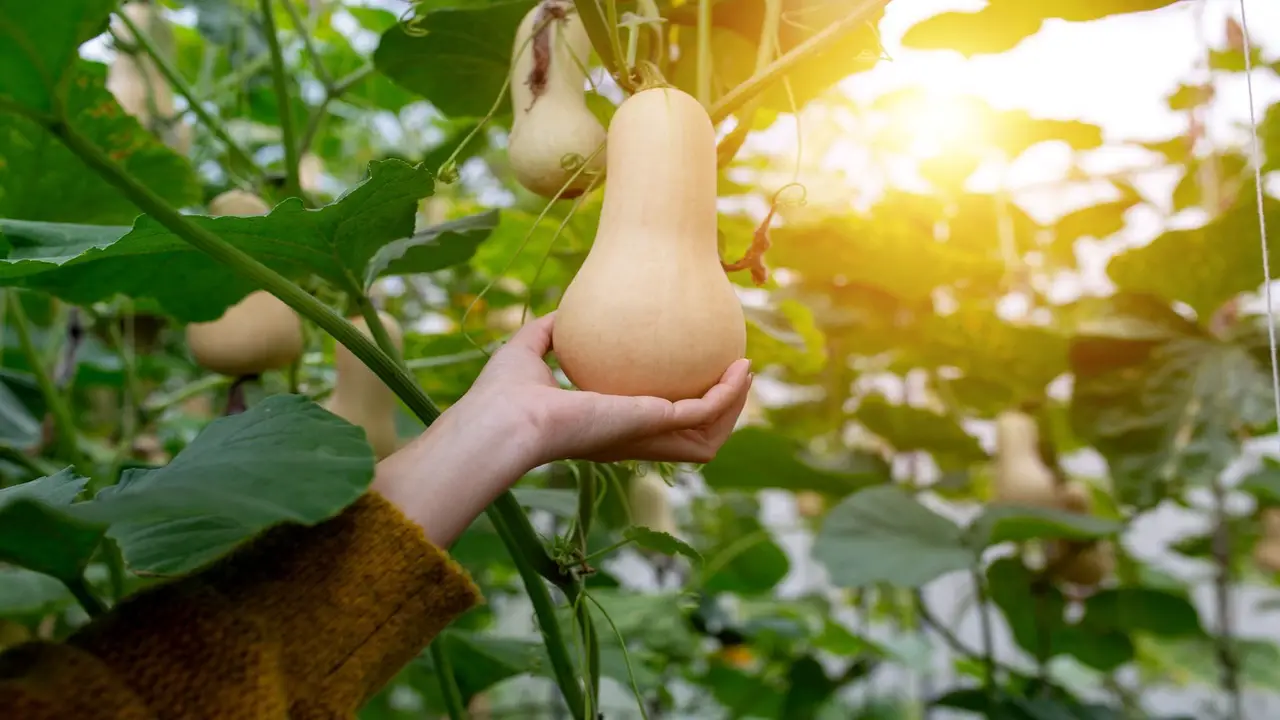
To harvest butternut squash, wait until the skin turns a tan or cream color – a signal that the squash is ripe and ready. To check for ripeness, simply tap the squash with your fingernail. A hollow sound indicates that it is ready for harvest.
It’s crucial to gather the squash before the first frost sets in to avoid any damage. Look for signs of rot or mold on the squash, and if spotted, harvest it immediately to prevent further spreading.
If you need to store butternut squash for an extended period, it’s best to harvest them unripe. Following these timing techniques will ensure a successful harvest and enjoyment of this delicious winter squash throughout the year.
Stem And Skin Characteristics
When harvesting butternut squash, it is important to pay attention to the stem and skin characteristics. Harvest mature squash when the stem is dry and the skin is hard. Cut the squash from the vine to harvest properly, leaving about an inch of stem attached. It is crucial to avoid immature squash with green stems and soft skin as they are not fully developed.
Instead, look for mature squash with a hard rind and a deep orange color. A good indication of maturity is when the stem easily separates from the vine. By following these stem and skin characteristics, you can ensure that you harvest butternut squash at its peak ripeness for the most flavorful and enjoyable culinary experience.
When To Harvest Butternut Squash
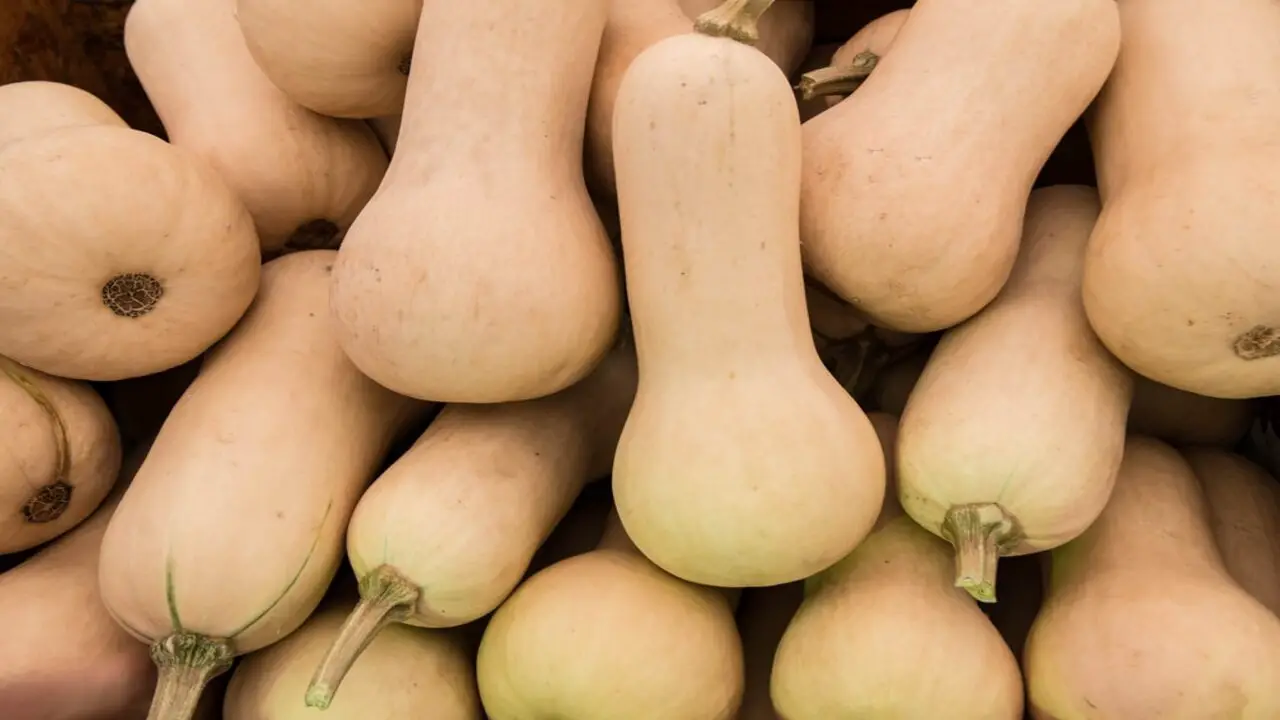
Late summer or early autumn is the ideal time to harvest butternut squash. Before you start harvesting, it’s important to check the weather forecast for any impending frost. To prevent any damage, make sure you harvest the squash before the first hard frost. When choosing which squash to harvest, look for mature ones that feel heavy for their size.
This indicates that they are fully developed and ready to be picked. Another sign to watch out for is when the vines and leaves start to die back. This is a clear indication that the squash is ready for harvest. By following these guidelines, you’ll be able to enjoy delicious and ripe butternut squash in your recipes.
Color
Harvest butternut squash when the skin turns a tan or cream color, indicating maturity. Look for a consistent color throughout the squash, as variations may indicate uneven ripening. Avoid green or immature squash, as they lack the sweetness and have a less developed flavor profile.
Instead, opt for squash with a deep orange color, as this indicates maximum sweetness and ripeness. Before harvesting, check for any signs of discolouration or blemishes, which may indicate spoilage or damage. By selecting squash with the right color, you can ensure a flavorful and satisfying harvest.
Skin
When it comes to harvesting butternut squash, the skin plays a crucial role in determining its ripeness and quality. Look for squash with hard and smooth skin, as this indicates maturity. Avoid squash with soft spots or blemishes on the skin, as these may be signs of rot or mold.
Instead, opt for squash with a glossy appearance, which is often an indication of ripeness. The skin should also be firm and intact, without any signs of damage. By paying attention to the skin of the butternut squash, you can ensure that you harvest the best-quality squash for your recipes.
Vines And Stems

To harvest your butternut squash, use garden shears or a sharp knife to cut the squash from the vine. Be sure to leave about an inch of stem attached to the squash, as this will help with storage. Avoid squash with green stems, as they are not fully mature. Instead, look for squash with dry and brown stems, indicating that they are ready to be harvested.
Additionally, pay attention to the health of the vines. Choose squash that has strong and healthy vines, as this is a good indication of the overall health of the plant. By following these tips, you’ll be able to harvest your butternut squash successfully.
How To Harvest Butternut Squash

To harvest butternut squash, use pruning shears or a sharp knife to cut the squash from the vine. Do this when the skin is hard and the stem is dry. It’s recommended to leave an inch of stem attached to the squash for better storage.
Once harvested, store the butternut squash in a cool, dry place with good air circulation. This will help prevent any potential rotting or mold growth. If you want to extend the storage life of the squash, consider curing it.
Curing involves allowing the squash to sit at room temperature for a few weeks to further ripen and develop its flavor. By following these steps, you’ll be able to enjoy your homegrown winter squash all the way into next year.
Curing Butternut Squash
To properly cure butternut squash, it should be placed in a warm and dry location for approximately 10 days. It’s important to choose a well-ventilated area with good air circulation to facilitate the curing process. This step is crucial as it helps toughen the skin of the squash and enhances its flavor. However, it’s important to avoid exposing the squash to direct sunlight during this period.
After the curing process is complete, store the butternut squash in a cool and dry place to maintain its quality. This ensures that the squash stays fresh and ready to be enjoyed in various culinary delights. So, make sure to follow these guidelines for an optimal harvest and storage of your winter squash bounty.
Storing Butternut Squash
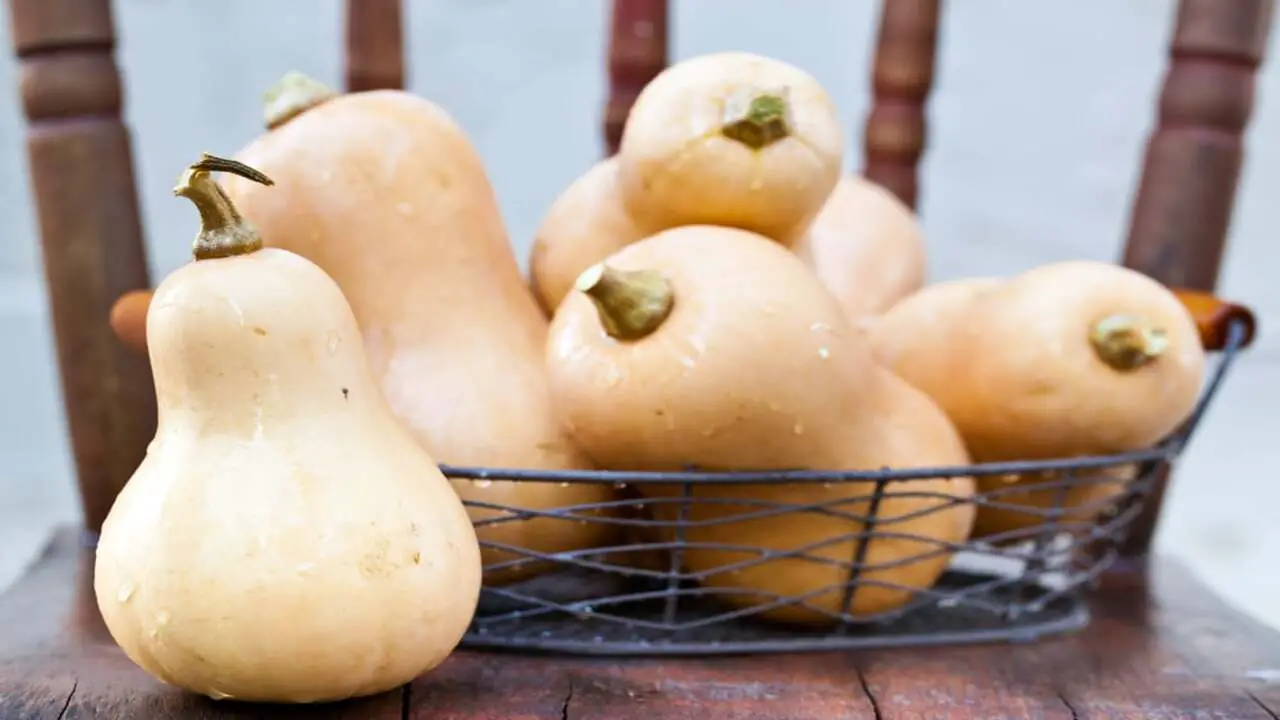
To properly store butternut squash, you’ll want to find a cool, dry place with good air circulation. Direct sunlight and high humidity can cause the squash to spoil, so it’s important to keep it away from these factors. Regularly check your stored squash for any signs of rot or mold to ensure its quality. For the best taste and texture, use your butternut squash within 2-3 months of harvesting.
If you have access to a root cellar or a cool basement, consider storing your squash there. By following these storage tips, you’ll be able to enjoy your winter squash well into the next year. Remember to utilize pruners or a sharp knife when harvesting, and take care to leave an inch of stem attached to the fruit for optimal storage.
Saving Seeds Of Butternut Squash
When it comes to saving seeds of butternut squash, there are a few key steps to follow. First, make sure you pick mature squash for seed saving. This ensures that the seeds inside are fully developed and viable. To get started, cut open the squash and remove the seeds.
It’s important to separate them from the pulp, and soak them in water to easily remove any remaining pulp. After that, dry the seeds completely before storing them. This helps prevent mold or rot from forming. Remember to label and store the seeds in a cool, dry place for up to 6 years.
By following these steps, you can successfully save and store seeds of your butternut squash for future use. Additionally, for successful seed saving, it’s crucial to select healthy squash and avoid cross-pollination with other varieties. This will ensure the quality and purity of the saved seeds.
Tips For Growing Butternut Squash
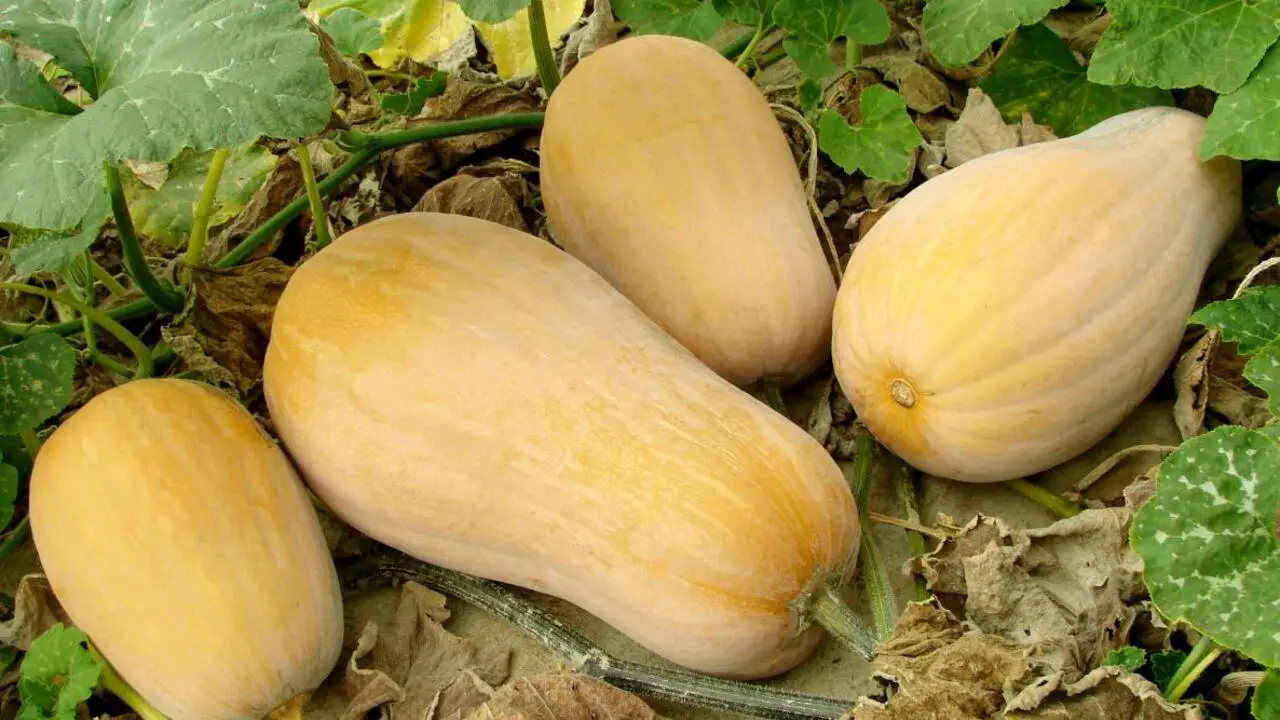
Growing butternut squash can be a rewarding experience, and with the right tips, you can have a bountiful harvest. Here are some tips to help you successfully grow butternut squash:
- Choose The Right Location: Butternut squash thrives in full sun, so make sure to choose a spot in your garden that receives at least 6-8 hours of direct sunlight each day.
- Prepare The Soil: Before planting, amend your soil with compost or well-rotted manure to improve its fertility and drainage. Butternut squash prefers well-draining soil with a pH level between 6.0 and 7.5.
- Planting Seeds: Start by planting seeds indoors about 4-6 weeks before the last frost date in your area. Once the danger of frost has passed and the soil temperature reaches around 60°F (15°C), transplant the seedlings into your garden.
- Spacing: Give each plant plenty of space to spread out. Plant them about 3 feet apart in rows that are spaced at least 6 feet apart.
- Watering: Keep the soil consistently moist but not waterlogged throughout the growing season. Water deeply once or twice a week, depending on rainfall and temperature.
- Mulching: Apply a layer of organic mulch around the base of the plants to help conserve moisture, suppress weeds, and regulate soil temperature.
- Pest Control: Monitor your plants regularly for pests like squash bugs or vine borers. Use organic pest control methods such as handpicking or applying insecticidal soap if necessary. By following these tips, you can enjoy a successful harvest of delicious butternut squash from your own garden.
Conclusion
To sum up, harvesting butternut squash requires knowledge of when to identify maturity, the right time to harvest, and proper storage techniques. Timing techniques, stem and skin characteristics, color, and vine and stem conditions are all indicators of a mature squash. After harvesting, curing the squash is essential for flavor development and long-term storage.
Storing squash in a cool and dry place will help extend its shelf life. Lastly, if you’re interested in growing butternut squash, make sure to provide adequate sunlight, space, and nutrients for healthy plant growth. With these tips and techniques, you can enjoy a bountiful harvest of delicious butternut squash.
Frequently Asked Questions
1.How Do You Know When A Butternut Squash Is Ready To Pick?
Ans: To determine if a butternut squash is ready for harvest, look for a deep tan or beige color with hard skin. The stem should be dry and brown, and when you press your fingernail into the skin, it shouldn’t leave an indentation. Keep track of the planting date as butternut squash usually takes 75-100 days to mature.
2.Can You Leave Butternut Squash On The Vine Too Long?
Ans: Leaving butternut squash on the vine for too long is possible, but not recommended. Overripe squash may have tough skin and stringy flesh. It is best to harvest when the skin is hard and fully colored. Harvested squash can be stored for several months in a cool, dry place.
3.Does Butternut Squash Need To Cure After Picking?
Ans: Curing butternut squash after picking is essential. It toughens the skin and extends its shelf life. To cure, store in a warm, dry place for 1-2 weeks. After curing, keep in a cool, dark area for up to 3 months.
4.Will Butternut Squash Continue To Ripen If Picked Too Early?
Ans: Butternut squash will not continue to ripen if picked too early. It is best to wait until the squash is fully mature, indicated by a hard rind and deep orange color. After harvesting, store in a cool, dry place for up to 3 months.
5.When Should I Harvest Butternut Squash?
Ans: To determine when to harvest butternut squash, look for a hard skin that can’t be punctured with a fingernail. The vines will start to die back, and the stem of the fruit will turn brown and dry out. Harvest before the first frost or when temperatures drop below 50 degrees Fahrenheit. Cut the fruit leaving about an inch of stem attached for longer storage.


